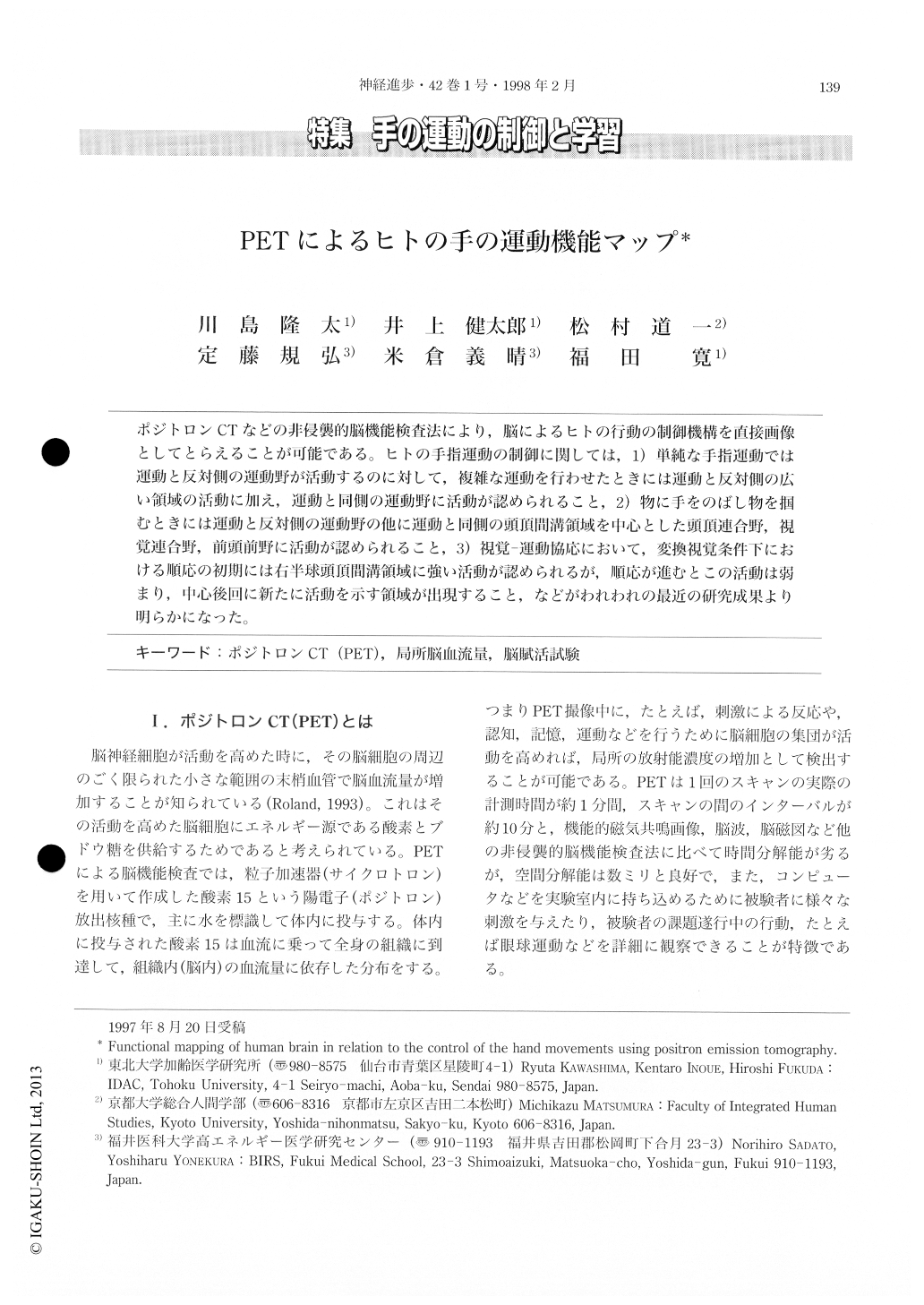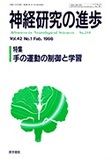Japanese
English
- 有料閲覧
- Abstract 文献概要
- 1ページ目 Look Inside
- サイト内被引用 Cited by
ポジトロンCTなどの非侵襲的脳機能検査法により,脳によるヒトの行動の制御機構を直接画像としてとらえることが可能である。ヒトの手指運動の制御に関しては,1)単純な手指運動では運動と反対側の運動野が活動するのに対して,複雑な運動を行わせたときには運動と反対側の広い領域の活動に加え,運動と同側の運動野に活動が認められること,2)物に手をのばし物を掴むときには運動と反対側の運動野の他に運動と同側の頭頂間溝領域を中心とした頭頂連合野,視覚連合野,前頭前野に活動が認められること,3)視覚―運動協応において,変換視覚条件下における順応の初期には右半球頭頂間溝領域に強い活動が認められるが,順応が進むとこの活動は弱まり,中心後回に新たに活動を示す領域が出現すること,などがわれわれの最近の研究成果より明らかになった。
Positron emission tomography (PET) techniques for mapping the functional organization of the human brain, in which regional cerebral blood flow (rCBF) is used to map the activity of neurons and synapses, have now achieved sufficient spatial resolution to identify specific sites of activation in relation to the motor tasks. Our recent PET studies investigating human brain activity in relation to the control of limb movements present following three evidences.

Copyright © 1998, Igaku-Shoin Ltd. All rights reserved.


